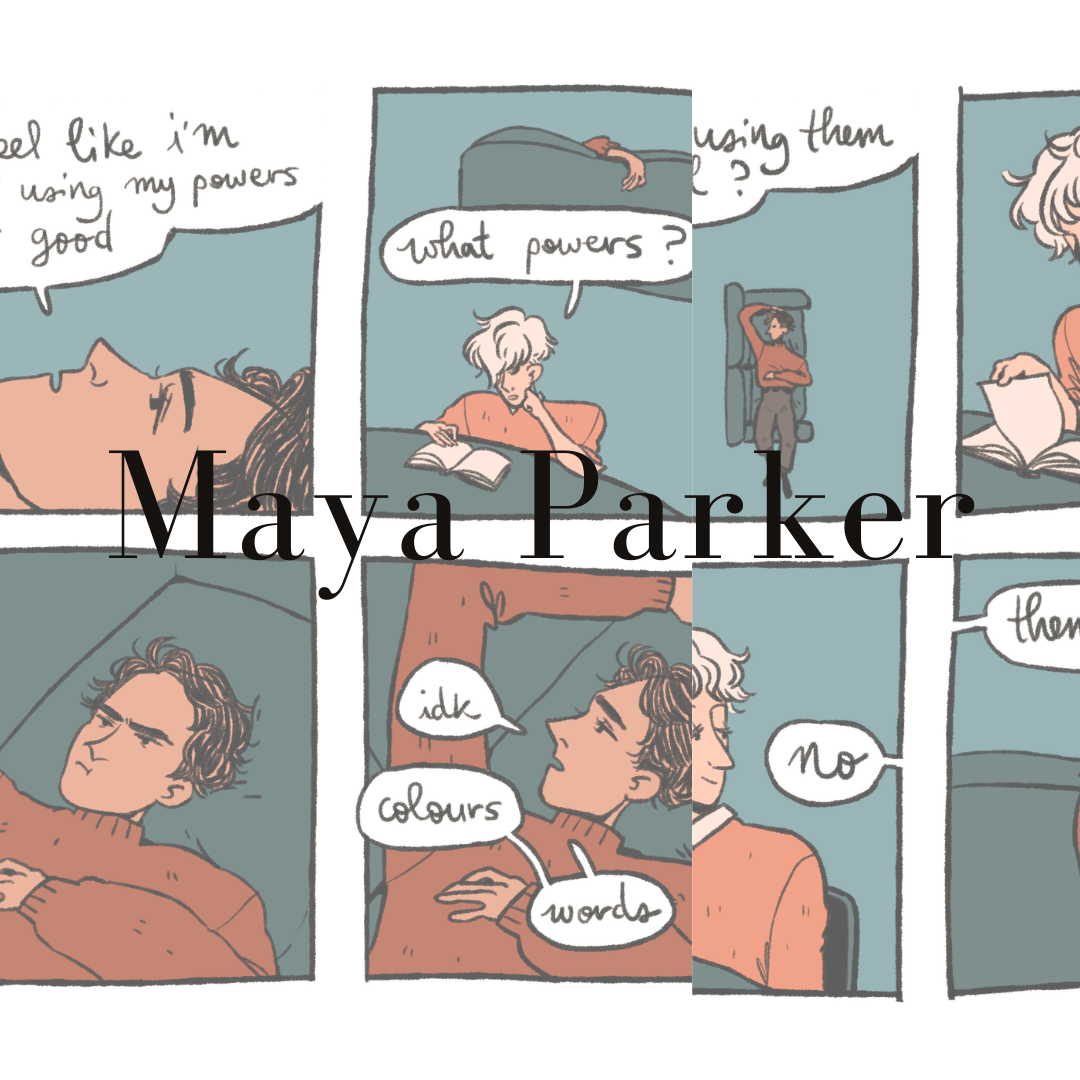
\Maya is a comic artist and illustrator from Vancouver, working primarily from an iPad while fully reclined on a couch with a cat on their legs. Their work tends to focus on the strange and the quiet; one of their favourite aspects about working in comics is the freedom of breathing room, the ability to draw out a pause for as long as needed through deliberate silence.
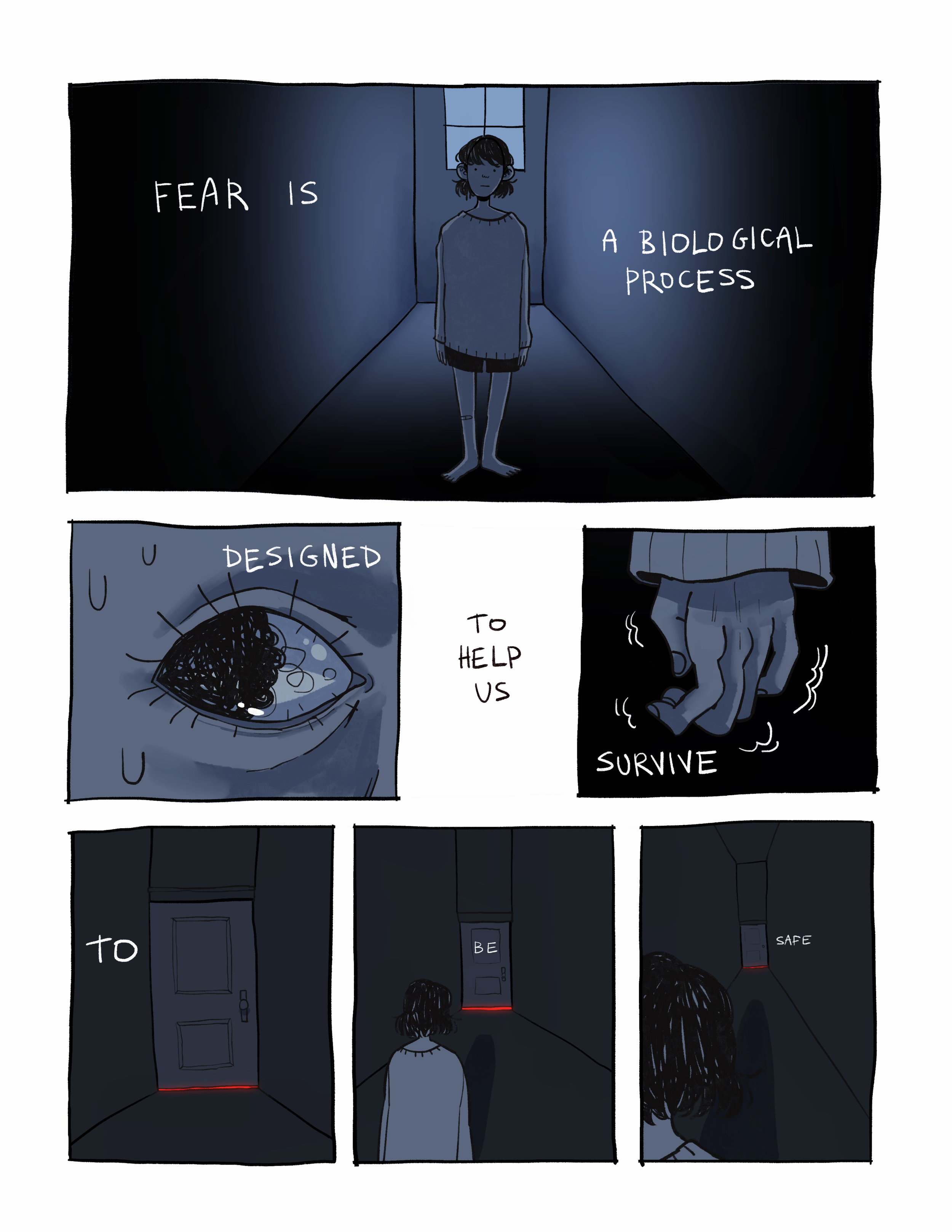
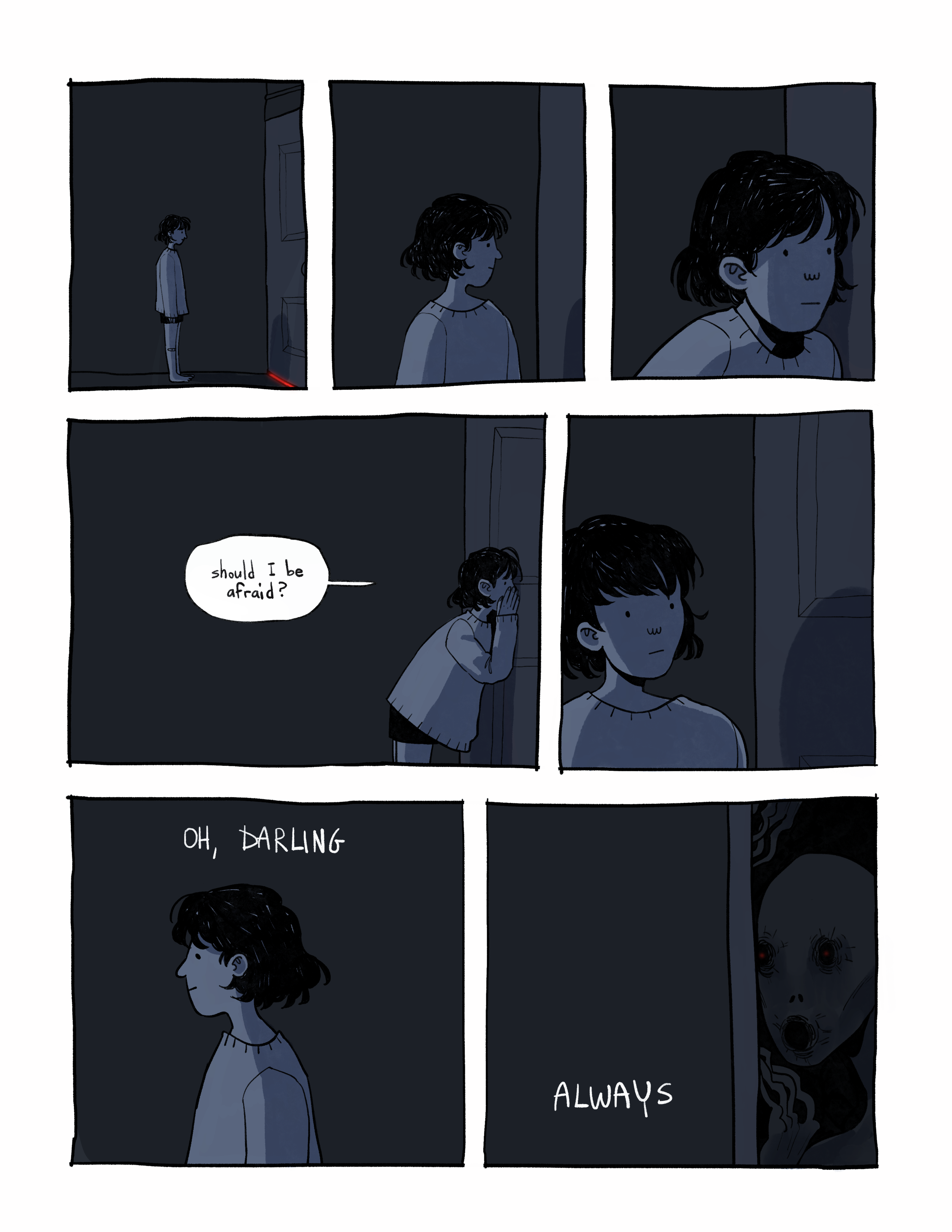
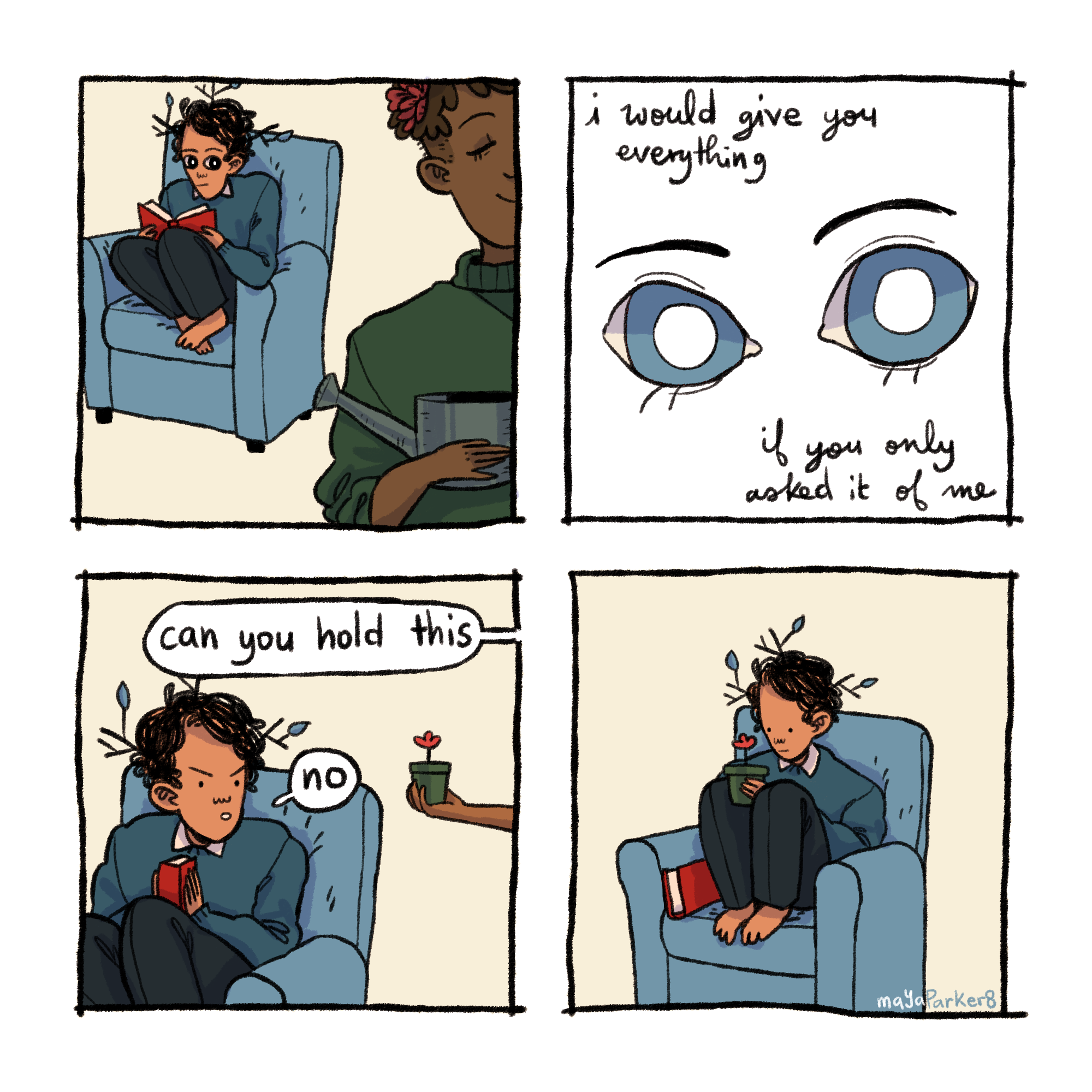
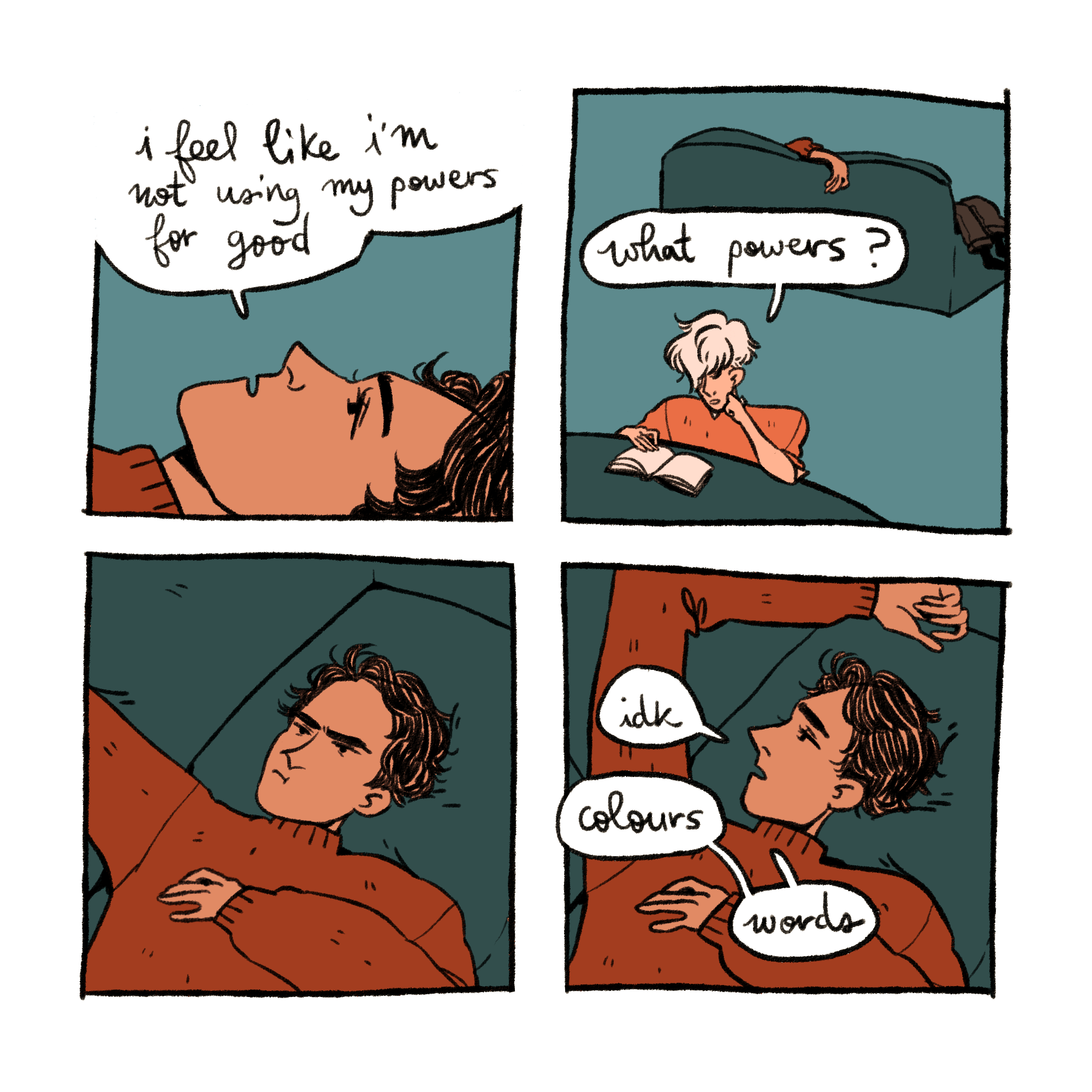
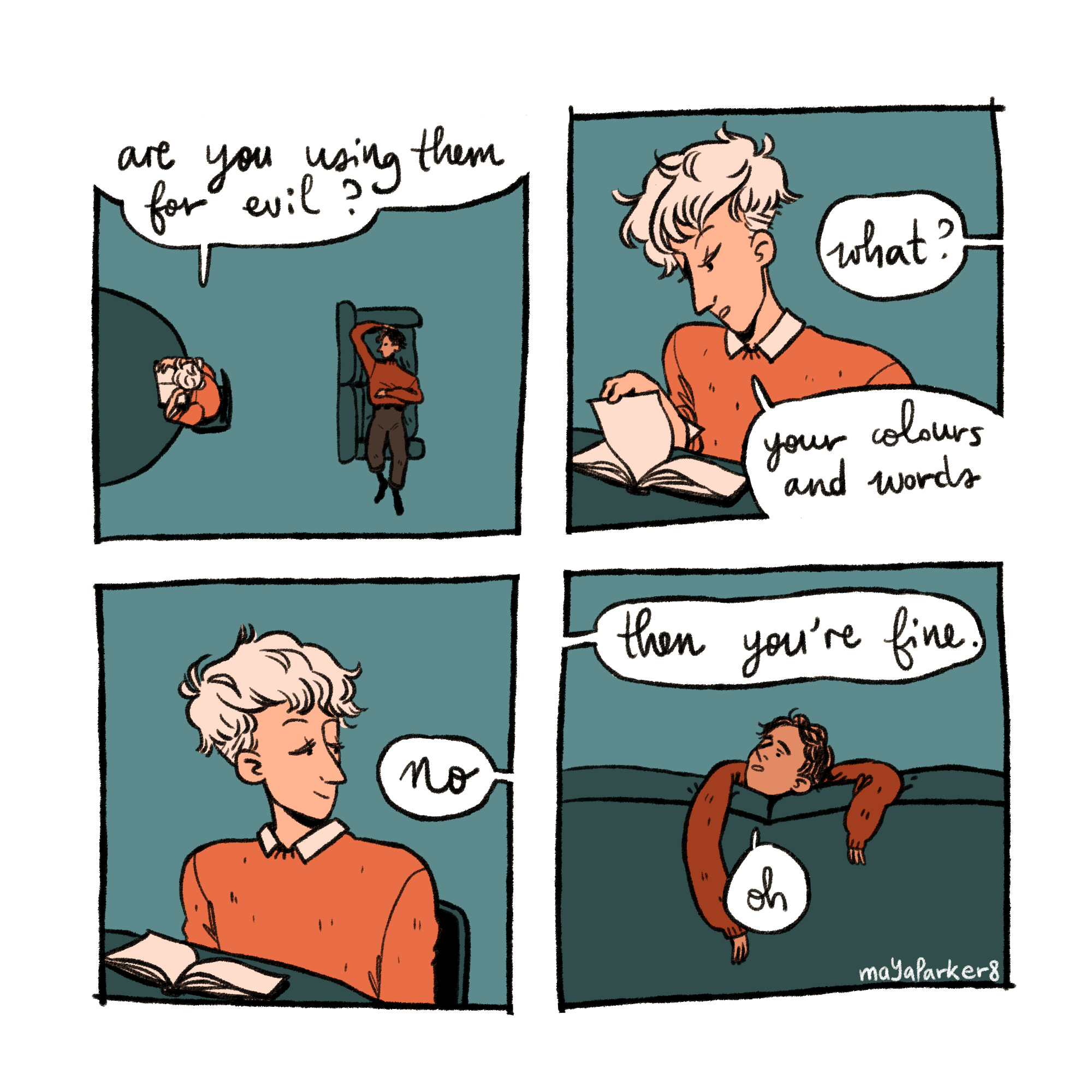
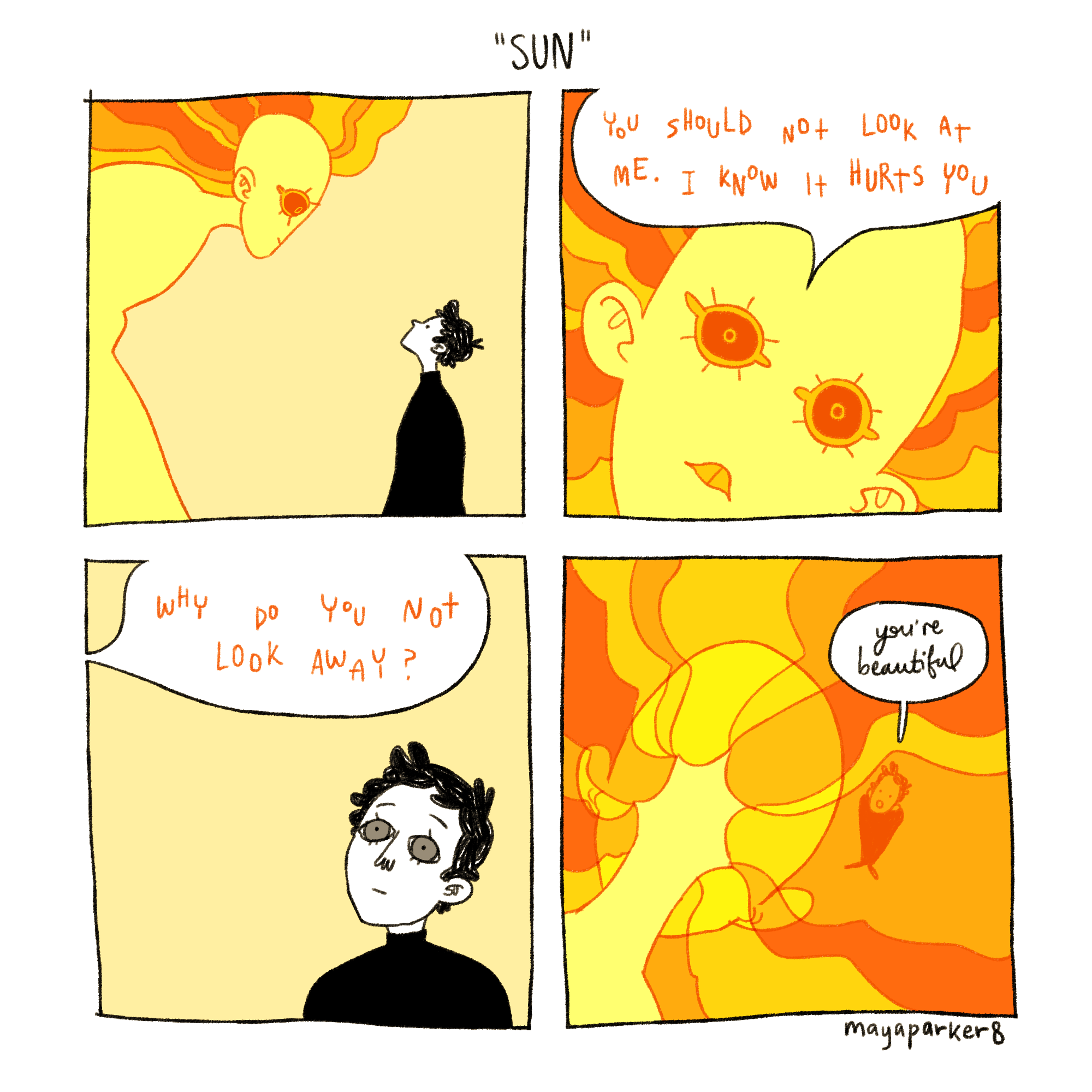
An Interview with Maya Parker
““There is no medium quite like it: even the quietest of novels have the necessity of words on a page. Australian comic artist Shaun Tan, for example, constructs incredibly vivid and heartfelt stories through often-wordless pages of masterfully rendered artwork.””
Ciara: What is your favourite part about creating comics?
Maya: I would say my favourite part is probably the versatility of the medium. I've always loved writing and drawing, so this somehow felt like the natural culmination of my passions. Through reading more comics (and taking some courses on them like a real academic) I've learned that there is so much you can express through the combination of words and images that I never even considered.
I also love the intimacy of the medium: especially in smaller publications or personal works done by just one or two people, every little line on the page was done by a deliberate hand, sometimes down to the writing in the speech bubbles. There's something very special about that, I think.
Ciara: What is your main medium?
Maya: I've worked digitally since I started making "serious" illustrations and putting them on the internet, but since recently I've been mainly using Procreate, which I've fallen in love with, although I maintain that the selection tool sucks. I always thumbnail on paper, though.
Ciara: Biggest inspirations (inside or outside of art)?
Maya: This is a hard question! There are so many artists I look up to and admire, and there are so many other sources that inspire me, like if I look at a tree for too long or think about the ocean. But more specifically, I'm a huge fan of artists like Sas Milledge, Juliette Cousin, Emily Carroll, and Sara Kipin, just to name a scarce few. Their work drives me insane in the best way.
Ciara: Favourite comics?
Maya: I'll probably have to go with my tried and true first love, Bone by Jeff Smith. More recently, though, I've been really into Aminder Dhaliwal's two graphic novels so far, Woman World and Cyclopedia Exotica. I love something that can make me laugh and also make me think really deeply about humanity right when I wasn't expecting to.
Ciara: What is your process for comic creation? I know some creators focus on the written story aspect, some solely on panel compositions, and some on the overall image aesthetic of a comic. Do you have a particular focus that draws you?
Maya: For me specifically, I have a pretty loose process, I think. I typically start with a script, which usually doesn't go into more detail than dialogue in point form (unless I'm forced to get specific for a class, which is usually for the best, especially if I leave it for too long and forget who's saying what). I thumbnail really messily in my sketchbook with tiny squares and stick figures that are nearly incomprehensible to anyone but me until I get page compositions that make sense to me, and then I actually do the pages.
I'd say my focus is definitely on panel composition; I especially like to script dialogue loosely so I have room to create some movement through what is shown in each panel, and then incorporate the words into that. A good example of what I mean would be like a tight zoom to someone's hand while they're speaking, and then to their mouth, or their foot, or something completely unexpected.
Ciara: Any tips for people looking to get into illustrating?
Maya: Draw what draws you! If you like plants, draw some plants. They don't have to be perfect; uniqueness, your artist's thumbprint, lies in your specific "imperfections." Also don't be afraid of rulers. Alternatively, if you're not afraid of rulers, try not using a ruler.
Ciara: One of my favourite aspects about comics is the community surrounding them. A lot of them start out as web comics or online and generate a following before they are fully released in print. I understand your newest comic “Unavoidable” uses dialogue from anonymous ominous compliments you were given online. How often does the art community influence your work?
Maya: It's always interesting for me when I get to have other people participate in my work to such an extent. I'm not a particularly social person, and I'm very controlling in creative projects (comics being a prime example, where I am the writing, the art, and the colours—the workload of perhaps five people, in most major serial publications). That said, the short answer (if this can be considered short) is that everything I do is influenced by the art community, or some aspect of community in general. I make comics to be seen and consumed by others, on a basic level, but specifically I might touch on issues I feel I can say something about, such as artist burnout or feeling unsuccessful, which are both common themes in the artist community: a sort of shared blanket pain that no one knows how to alleviate, or perhaps it's too meme-able to bother wanting to alleviate.
From a slightly different social angle, I am often aware that as an artist of colour making efforts to draw people and characters of colour, I am of a minority: in this way, all my brown protagonists with wavy dark hair seem to exist in spite of, or in response to, the eurocentric norm of what I usually see, in art or otherwise. I once posted a greyscale drawing of a dark-skinned, heavy-bodied vampire lady (as one does), and another user posted a caption beneath it describing the image for the benefit of visually impaired users; they described the vampire as "thin" and "pale-skinned," two things that I explicitly did not intend. It drove home for me how people see what they expect to see, and as the artist, I need to make especially clear what my own intentions are. I find that it's necessary to challenge people's unconscious biases. It can, however, get very tiring, especially since I often draw very simple Tintin-style faces, so people don't always pick up on the this-is-not-a-small-pointy-nose and the this-is-not-white-skin, and I can't run around policing the way people see things. My race is a part of my everyday life, so it makes sense to me that it would be a part of my art, as well: not the focus, but always apparent on the page. It feels really weird when people can't see that.
I also draw a lot of gay people. Do with this information what you will. I've lost track of the question.